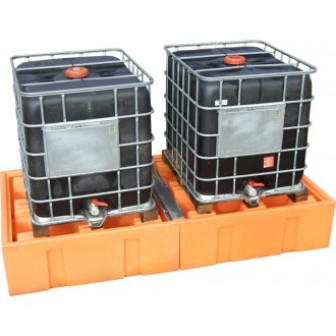
Yellow Shield, an environmental control company, is on a mission to help more companies understand the storage of bulk liquids.
A lot of companies are in desperate need of bunded tanks to store their oil and chemicals, but unfortunately, not all of them are aware of the benefits that these storage methods can give a company.
Christian Harrer from Yellow Shield has offered his specialist knowledge in order to help companies determine their need for bunded tanks.
He begins by explaining the primary considerations for companies to take:
Where a single skinned tank is in existence either with or without a surrounding bund, the alternative to purchasing a bunded tank would be to build, repair and reline the bund.
There are three construction material types on the market for bunded tanks - polyethylene, steel and fibreglass.
Yellow Shield has gone on to outline the next four aspects that companies should consider when it comes to bunded tanks.
Consideration 1 - Legislation
There is legislation related to the bunding of liquid storage tanks that companies should make themselves familiar with. Tanks for chemicals and potable water do not need to be bunded. All tanks for storage of oils and fuel outside must be bunded to comply with current Oil Storage legislation except for:
Domestic heating oil below 3,500 litres in England and 2,500 litres in Scotland.
All oils on farms in England. Agricultural oil storage regulations apply*
Oils on farms in Scotland below 2,500 litres. Agricultural oil storage regulations apply*
Waste mineral oils in England. Pollution Prevention Guidelines Environment Agency (PPG8 ) applies*
For tanks and applications not covered by the Oil Storage legislation, the Environment Agency issues guidelines (PPG2) which state that oil should be stored in tanks of sufficient strength and structural integrity to ensure that it is unlikely to burst or leak in ordinary use. However current legislation states that a single skinned tank will not be appropriate if the tank is cited within:
50 metres of a well, borehole or spring,
10 metres of controlled water, for example, an open drain, manhole cover, river, stream or lake,
Where the tanks vent is not visible from its fill point,
Where the capacity exceeds 2,500 litres, or where potential spillages could run over ground into controlled waters.
Consideration 2 - Bund Repair and Relining
An external bund built around a single skinned tank may be more cost effective than buying a replacement double skinned tank. The Environment Agency's Pollution Prevention Guidelines, PPG2, describe the requirements of such an external bund. It should:
Provide storage of at least 110% of the tank's maximum capacity.
Be impermeable to oil and water, and there should be no direct outlet connecting the bund to any drain, sewer or watercourse or discharging into the yard.
Contain within any valves, filters, sight gauges, vent pipes or other ancillary equipment.
Where external bunds around tanks exist but have become permeable over time, then specialist companies provide bund relining with glass reinforced polymer. Glass reinforced polymer bund linings now have a life up to 20 years.
Consideration 3 - Construction Material
Polyethylene tanks are suited to the storage of fuels, oils, biodiesel and potable water or chemicals where a capacity of less than 5,000 litres is required. Polyethylene tanks can be manufactured to OFTEC standard OFS T100 and have the advantages of being:
Lightweight and easily handled
Cost effective
Low maintenance - do not need regular repainting
Corrosion free
UV stabilised
Steel tanks for the storage and transport of fuels and oils can be constructed to very large sizes of over 100,000 litres complying with OFTEC Standard OFS T200.
Steel has the advantage of:
Having a larger potential storage capacity
Being robust and strong in harsh conditions
Safe and secure on vulnerable sites. Theft through cutting into the tanks is unknown.
Ability to be made into transportable bowsers
No need for prepared base
Range of pumps and accessories available
The transport of fuel on site can be achieved using:
Steel fuel bowsers handled by fork lift and mechanical handling devices
Steel bowsers for on site tow which are mobile UN approved bowsers
Transport of fuel on a highway can be achieved using:
ADR approved steel fuel cubes
Steel bowsers for Highway tow
Glass Reinforced Plastic Tanks can be used for the storage of chemicals, food, water, or oil and fuel.
They have the advantages of:
Chemical resistance so can be used with the most aggressive chemicals
Potable water suitability
Durability
Easily made to order for specific requirements.
GRP tank technology is now accepted as reliable and robust and these tanks are manufactured to requirement under BS 4994 1987 British standard within which there are three categories:
1. Category 1 - Tanks over 50 cu metres and flammable liquids
2. Category 2 - Tanks 10 - 49 cu metres and flammable liquids
3. Category 3 - Tanks less than 10 cu metres and non flammable liquids
Consideration 4 - Cost
Material and transport costs change so it is important to get a quote for your specific requirements.
Yellow Shield is hoping that their guide to bunded tanks will help companies to understand the requirements and legislation related to bunded tanks.